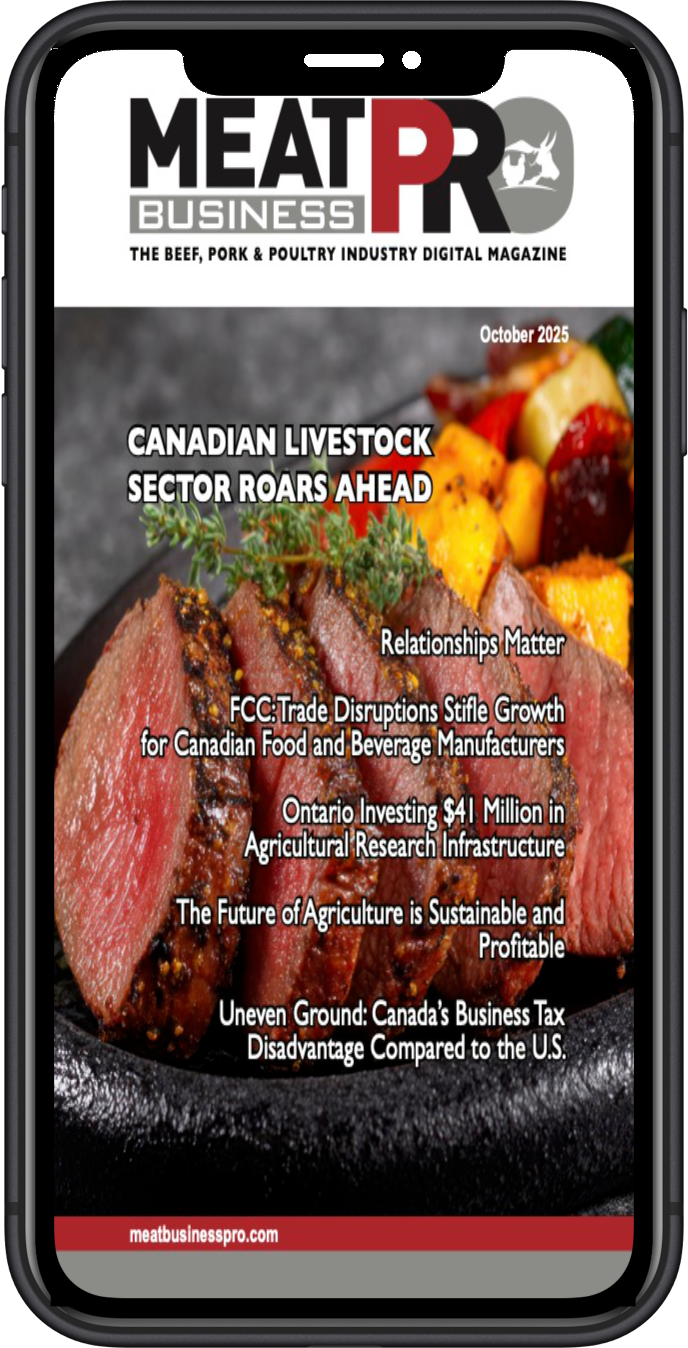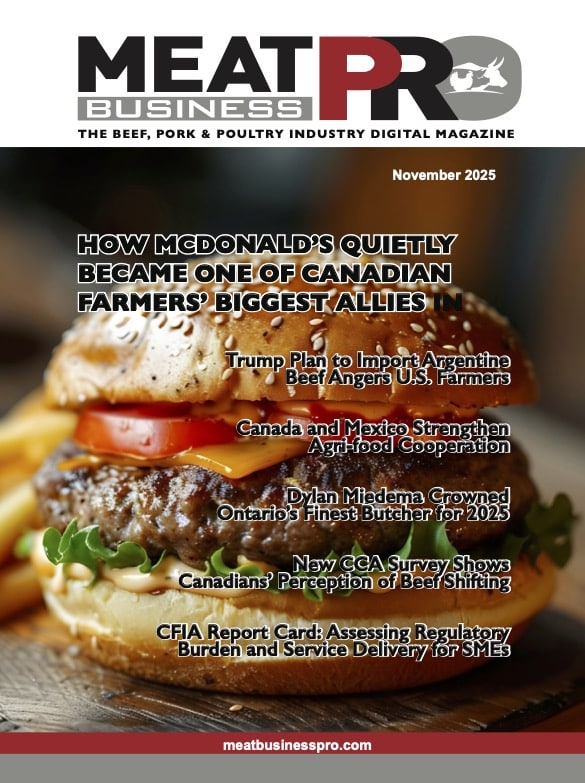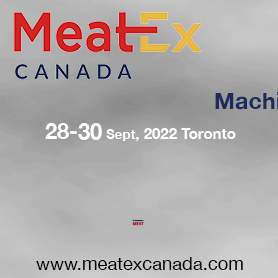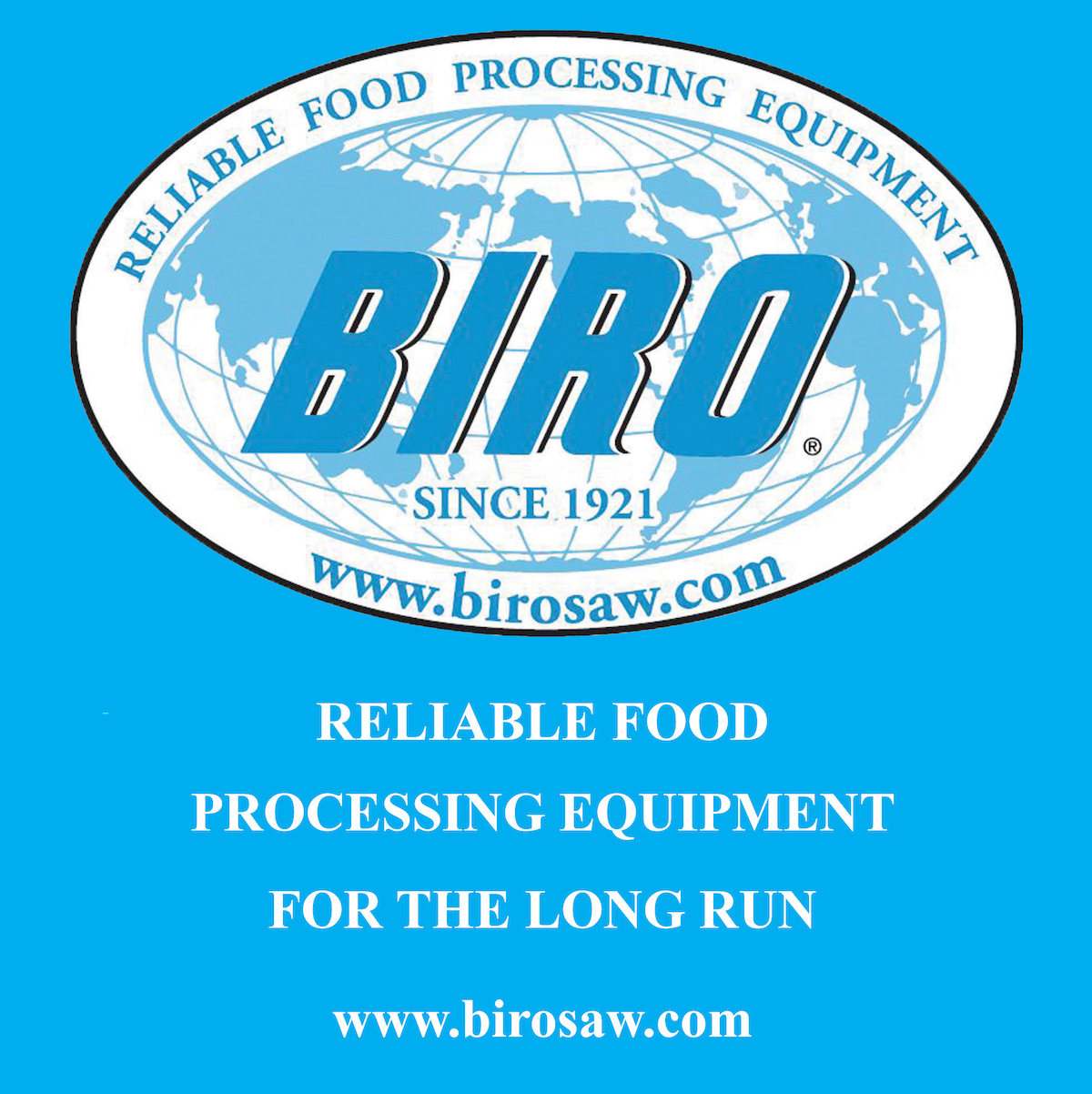More efficient production and improved resource conservation is key to practical sustainability

The meat processing industry is a sector characterised by high energy, water and material consumption. Therefore, production and packaging processes should be as sustainable and resource efficient as possible
This is not only good for the environment, it also increases efficiency and cuts costs. The world’s leading trade fair for the sector, IFFA – Technology for Meat and Alternative Proteins, is showcasing the technologies used for this under the top theme of ‘Putting sustainability into action.
Be it energy efficiency, process efficiency or resource efficiency, “Sustainability is invariably linked to efficiency,” says Klaus Schröter, Chairman of the VDMA Process Technology Division for Meat and Protein Processing: “Accordingly, machine and plant manufacturers are constantly developing solutions to reduce the consumption of media and materials, such as water, cooling, cleaning agents and compressed air.
Where waste heat is generated, we utilise it in other operational areas. We also integrate solar technology into processes to make them more energy efficient.” Energy efficiency is the greatest lever for improving sustainability in food production and, therefore, reducing costs because heat generation and the subsequent cooling process account for up to 60 percent of all energy consumed. Heat is needed for all kinds of food preparation, as well as sterilising and cleaning; chilling is needed to cool meat and thus ensure food safety, etc.
Energy efficiency: heat pumps are the technology of choice
When it comes to energy efficiency, heat pumps are increasingly the technology of choice in the meat processing industry. In conjunction with compressor-based process-cooling systems, they facilitate environmentally friendly cooling and heating in a continuous cycle, which can reduce energy consumption by around 30 percent and cut CO2 emissions by as much as 50 percent by making fossil-fuelled boilers superfluous.
Heat pumps can also prevent excess heat from leaving the refrigeration system unused by heating it to 90 degrees and using it elsewhere, e.g., for washing and cleaning, or to heat water for other processes, such as pasteurisation, bleaching and drying.
A logical next step in moving towards CO2-neutral production in the meat industry is the installation of photovoltaic systems to power heat pumps or the introduction of biogas plants that generate energy using organic waste from meat production. In this way, a medium-sized abattoir can save around 1,500 tonnes of CO2 a year.
Saving water through waste-water utilisation and hygienic design
Like waste heat, waste water from the production stage can also be recycled and utilised for less critical processes such as cleaning or cooling. A common method for recycling process water is by treating it using filtration technologies such as ultrafiltration or reverse osmosis.
In addition to waste-water treatment, the hygienic design of machines and systems is another way of using water efficiently and sustainably. Fully enclosed machine bodies, sloping polished stainless-steel surfaces and flush-mounted panels help reduce the consumption of water and cleaning agents.
Artificial intelligence (AI) is another important driver when it comes to making production processes more sustainable. One example is the AI-aided regulation of cold stores. AI automatically adjusts the cooling curve, which can significantly reduce power consumption and CO2 emissions.
More sustainability for artisan businesses
Artisan businesses are inherently more sustainable than large industrial companies. “They stand for regional structures, short transport distances and minimal packaging,” says Herbert Dohrmann, President of the German Butchers’ Association. “That’s why sustainability has its origins in the artisan sector.” Nevertheless, it is also possible to reduce the consumption of energy and resources in many small and medium-sized businesses.
Specialist butchers or butcher’s shops, for example, which use a lot of machinery, pumps or compressors, can significantly cut their electricity consumption by installing optimisation systems that detect and eliminate disturbances in the power grid, such as reactive currents, frequency shifts or voltage fluctuations. As a result, energy consumption can be reduced by up to 20 percent.
Intelligent motor control systems improve machine efficiency by providing exactly the power required. Take cutting machines, for example, where, depending on the resistance, a control module regulates motor power so full torque is only developed for products that are difficult to cut. Thanks to demand-oriented regulation, such devices use up to 45 percent less electricity than conventional machines. Further savings can be achieved through modern drive technology, e.g., servomotors in vacuum filling machines or cutters. Given the high price of industrial electricity, such investments are likely to pay off very quickly.
Bio-based packaging increases the recycling rate
Packaging is an important aspect of the transition to a circular economy that produces as little waste as possible through reuse and recycling. The legal framework for this is the new EU Packaging Regulation, which came into force on 11 February 2025 and affects almost all sectors, including the meat-processing industry.
This new regulation stipulates, inter alia, that 40 percent of packaging must be reusable by 2030 and 70 percent by 2040. Certain proportions of recycled materials are also specified. For example, packaging that is not made of PET and comes into contact with food must consist of 10 percent recycled materials by 2030 and 25 percent by 2040. The regulation even affects the design of packaging to ensure it is as light, small and separable as possible. Researchers are therefore working on bio-based alternatives made from regenerative raw materials, such as seaweed, and which can either be recycled or composted. Enzymes are incorporated into the bioplastics for more effective composting.
Multilayer composites can be separated and recycled via the enzymatic degradation of an intermediate layer. Coatings based on whey protein reduce oxygen permeability. Another trend is the replacement of conventional plastic packaging by paper composites. Paper composite packaging coated with nanocellulose is a mono-material that is 100 percent recyclable via the waste-paper stream. The cellulose also acts as an oxygen barrier. To increase the recycling rate, research is also being carried out into improving the separability of common multilayer packaging.
The Fraunhofer Institute for Process Engineering and Packaging, IVV, is using a solvent-based process that separates target plastics as monomaterials from mixed plastics or composites and turns them into high-quality regranulates, which significantly increases the recycling rates for composite packaging and multilayer films.
AI for perfect packaging
Naturally, researchers are also using AI to develop packaging that is as perfect as possible, and which not only has a good environmental footprint but also fulfils a wide range of requirements, such as durability, design, customer acceptance and, last but not least, cost. In the interdisciplinary research project KIOptiPack, scientists are working together with partner companies to develop software that uses AI to make proposals for the best possible packaging designs at the same time as minimising the amount of material used and ensuring a high proportion of recycled material. This enables companies to develop sustainable packaging solutions without time-consuming test phases.
IFFA – Technology for Meat and Alternative Proteins – presents state-of-the-art technology in Frankfurt am Main from 3 to 8 May 2025. Further details at www.iffa.com.
Messe Frankfurt showcases the dynamic growth of the food industry with four trade fairs on three continents. The industry meets at these events in Argentina, Thailand, the USA and Germany. For more information visit:
www.food-technologies.messefrankfurt.com












